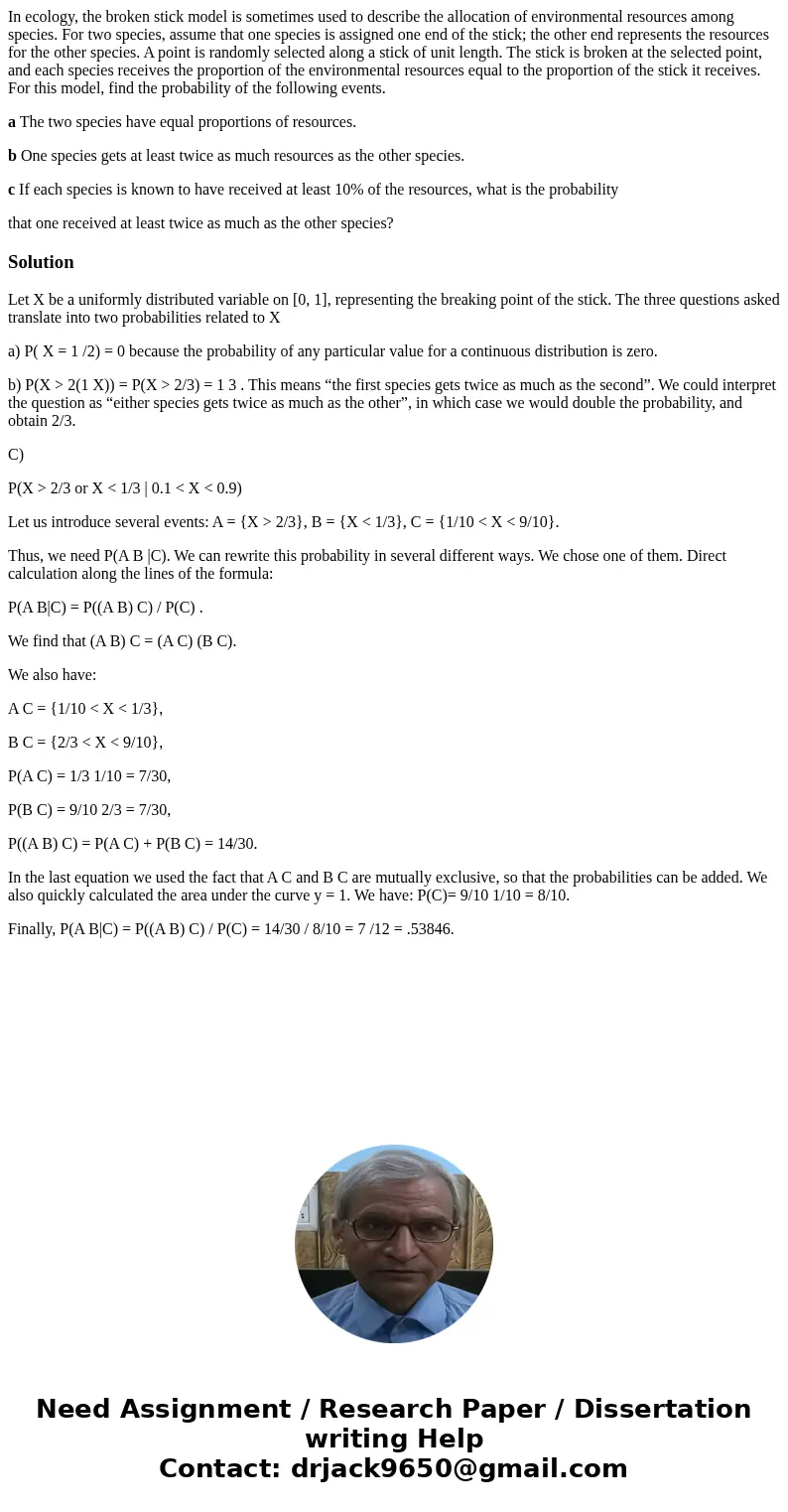In ecology the broken stick model is sometimes used to descr
In ecology, the broken stick model is sometimes used to describe the allocation of environmental resources among species. For two species, assume that one species is assigned one end of the stick; the other end represents the resources for the other species. A point is randomly selected along a stick of unit length. The stick is broken at the selected point, and each species receives the proportion of the environmental resources equal to the proportion of the stick it receives. For this model, find the probability of the following events.
a The two species have equal proportions of resources.
b One species gets at least twice as much resources as the other species.
c If each species is known to have received at least 10% of the resources, what is the probability
that one received at least twice as much as the other species?
Solution
Let X be a uniformly distributed variable on [0, 1], representing the breaking point of the stick. The three questions asked translate into two probabilities related to X
a) P( X = 1 /2) = 0 because the probability of any particular value for a continuous distribution is zero.
b) P(X > 2(1 X)) = P(X > 2/3) = 1 3 . This means “the first species gets twice as much as the second”. We could interpret the question as “either species gets twice as much as the other”, in which case we would double the probability, and obtain 2/3.
C)
P(X > 2/3 or X < 1/3 | 0.1 < X < 0.9)
Let us introduce several events: A = {X > 2/3}, B = {X < 1/3}, C = {1/10 < X < 9/10}.
Thus, we need P(A B |C). We can rewrite this probability in several different ways. We chose one of them. Direct calculation along the lines of the formula:
P(A B|C) = P((A B) C) / P(C) .
We find that (A B) C = (A C) (B C).
We also have:
A C = {1/10 < X < 1/3},
B C = {2/3 < X < 9/10},
P(A C) = 1/3 1/10 = 7/30,
P(B C) = 9/10 2/3 = 7/30,
P((A B) C) = P(A C) + P(B C) = 14/30.
In the last equation we used the fact that A C and B C are mutually exclusive, so that the probabilities can be added. We also quickly calculated the area under the curve y = 1. We have: P(C)= 9/10 1/10 = 8/10.
Finally, P(A B|C) = P((A B) C) / P(C) = 14/30 / 8/10 = 7 /12 = .53846.

 Homework Sourse
Homework Sourse